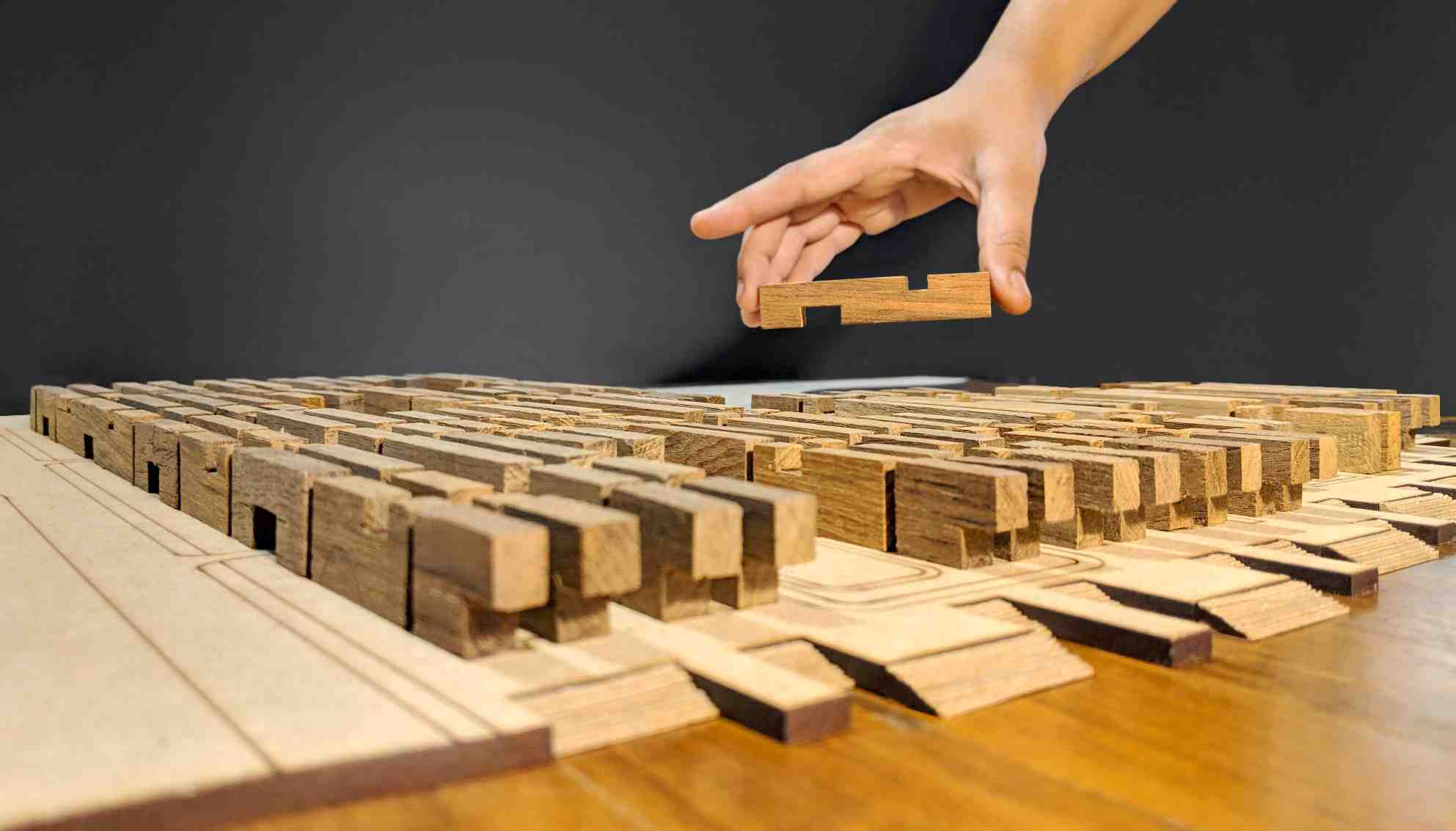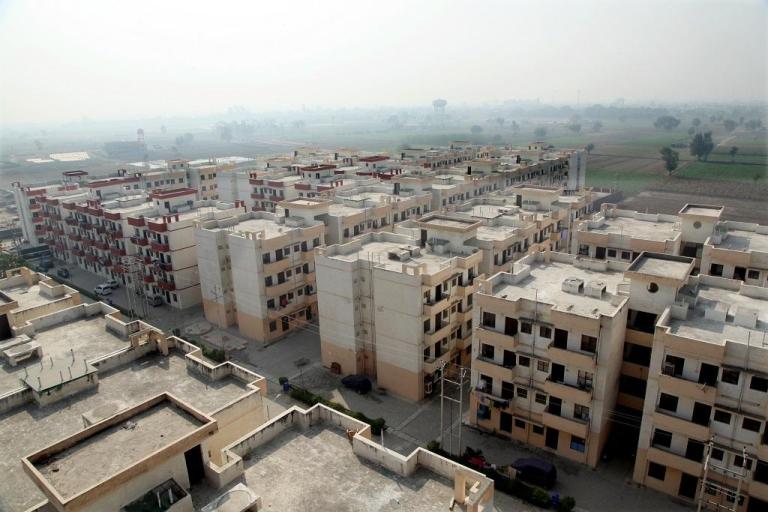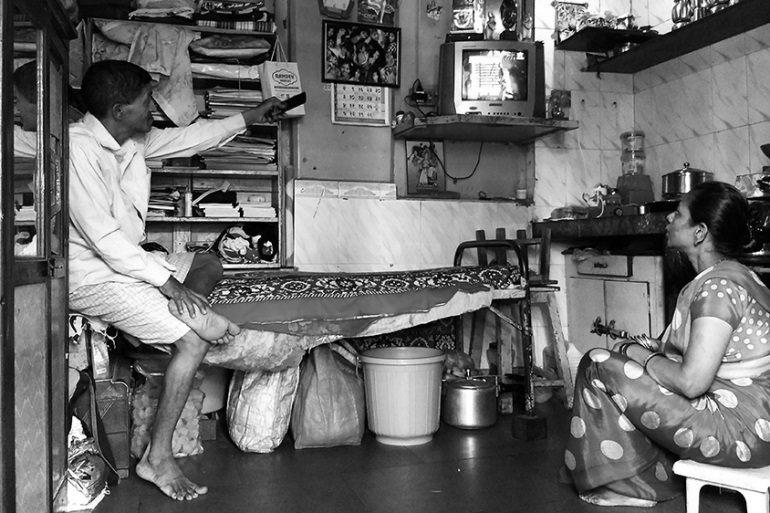
By responding appropriately to the ecological context of the site & the requirements of factory workers, an extremely simple and aesthetically pleasing built environment is designed, by atArchitecture. Each dwelling is part of a cluster, which is formed by the alternating pattern of voids & solids, ensuring courtyards on both sides of each apartment. The utility courtyard containing kitchen garden & the semi-open verandas act as an extension to the entrance vestibule. On the other side, a band of green open space is the community courtyard, commonly enjoyed by living areas of each apartment. The compact form of housing modules and interconnected circulation routes at the ground and first-floor level makes the project easy to move around, contributing positively to its functionality, health & passive surveillance.
Space and cost-efficiency
The project can be constructed with a very less number of necessary components, making it cost-effective. A composite of local clay bricks and concrete is used for construction. In the minimal format, every imperative detail of each apartment and user requirements has been satisfied. Most of the spaces being shared either functionally or visually, making the project space-efficient. For instance, the corridor leading to the apartments is also shared as a veranda overlooking the open-to-sky courtyards, and similarly, on the other side, the boxing for recessed windows are shared as a storage cabinet. The layout of the house is kept simple with no permanent partitions or offsets in the rectangular plan, accounting for the flexibility and efficiency of the space.
Community living- Safe, secure and social
Semi-open collective facilities such as shops, bike parking, crèche, etc. are integrated at the end of each cluster help create an inclusive environment. Accessible open spaces in the form of series of courtyards become places for social interaction. The continuous row of clusters containing houses, utility court & community court is dotted by 5 larger recreations and playgrounds. The campus is served by simple loop roads and cycle tracks, interconnecting all the clusters, collective facilities and recreational spaces and converges at the riverfront, which has been developed as a public space with the market. The seamless integration of living spaces into the public and community spaces led to the development of a ‘Home’ for the workers within the wider ‘House’ of the community.
Drawings:














One Response